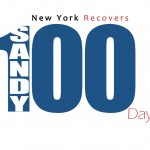
NEW YORK – Most of the debris is gone. Communities are making plans for the future and survivors of Hurricane Sandy are receiving financial assistance for storm-related losses.
In New York, the recovery process is well under way 100 days after the storm made landfall Oct. 29, 2012. The whole community is involved in the recovery effort, including federal, state, tribal and local agencies, the private sector and voluntary and faith-based organizations.
The Federal Emergency Management Agency has approved $888.5 million for individuals and households in New York to help eligible survivors with temporary rental costs and other uninsured losses resulting from the hurricane.
Many people have taken advantage of low-interest disaster loans from the U.S. Small Business Administration. SBA has approved disaster loans for 12,991 homeowners, renters and businesses totaling $892.2 million.
The National Flood Insurance Program has paid claims totaling $1.9 billion to 56,000 policy holders.
After a devastating storm, one of the priorities is to clean up the debris so neighborhoods can begin rebuilding. The U.S. Army Corps of Engineers and local and state agencies have removed 5.2 million of the estimated 5.6 million cubic yards of debris. The Corps also drained 270 million gallons of water from subways, tunnels and underpasses within two weeks of the storm.
To ensure that everyone receives information about assistance, FEMA is providing information in 25 languages.
The private sector is playing a key role in spreading information about the kinds of assistance available. The business community has displayed the message on video screens in Times Square, Madison Square Garden and Lincoln Center, among other places. The Metropolitan Transit Authority placed posters at bus stops and subway entrances and on the Staten Island Ferry. The NYC Taxi Commission put the message on video screens in taxi cabs.
FEMA’s Public Assistance program so far has approved $606 million for the repair or replacement of public facilities, debris removal and emergency costs resulting from the disaster, among other expenses. These grants included $106 million to NYPD for personnel costs during the emergency, $46 million to
the New York Department of Sanitation for labor and equipment expenditures and $24 million to the City of Long Beach for debris removal.
More than 500 national, state and local voluntary and faith-based organizations are helping people in need. They are providing donations, volunteer management, home repair, child care, counseling services and removal of muck and mold from homes.
Mitigation specialists are counseling property owners on ways to rebuild structures so they are more resilient to future storm damage. So far, 21,000 have been provided information.
Because of a shortage of available rental units after the storm, FEMA temporarily housed 5,917 individuals and families in hotels and motels through its Transitional Sheltering Assistance Program. This is a short-term option for eligible survivors while they work on longer-term housing arrangements.
In the weeks after the storm, federal agencies deployed more than 5,000 personnel to New York. Many of those specialists are still on the job and FEMA has hired more than 500 local residents to help with disaster recovery operations. Storm survivors are still receiving face-to-face help in the recovery process at disaster recovery centers. So far, New Yorkers have visited the centers 151,116 times.
The federal disaster recovery coordinator for New York is working with public and private partners at federal, state and local levels to identify unmet needs and traditional and innovative resources that can be used to support rebuilding. These efforts will result in a strategy that will be used to guide development for years to come.
People who had losses resulting from the storm are urged to register with FEMA by Feb. 27. They can register with FEMA online at www.DisasterAssistance.gov or via smartphone or tablet at m.fema.gov. They may also call 800-621-3362 or (TTY) 800-462-7585. Those who use 711-Relay or Video Relay Services (VRS) can call 800-621-3362. The toll-free telephone numbers are available from 7 a.m. to 1 a.m. EST, seven days a week.
For more on Hurricane Sandy recovery in New York, visit www.FEMA.gov/SandyNY.
Note: Photos of Hurricane Sandy and the recovery operation can be found at:
http://www.fema.gov/disaster/4085/updates/100-days-after-hurricane-sandy-new-york-look-back-photos
FEMA’s mission is to support our citizens and first responders to ensure that as a nation we work together to build, sustain, and improve our capability to prepare for, protect against, respond to, recover from, and mitigate all hazards. Recovery assistance is available without regard to race, color, religion, nationality, sex, age, disability, English proficiency or economic status. If you or someone you know has been discriminated against, call FEMA toll-free at 800-621-FEMA (3362). For TTY call 800-462-7585.
FEMA’s temporary housing assistance and grants for public transportation expenses, medical and dental expenses, and funeral and burial expenses do not require individuals to apply for an SBA loan. However, applicants who receive SBA loan applications must submit them to SBA loan officers to be eligible for assistance that covers personal property, vehicle repair or replacement, and moving and storage expenses.




